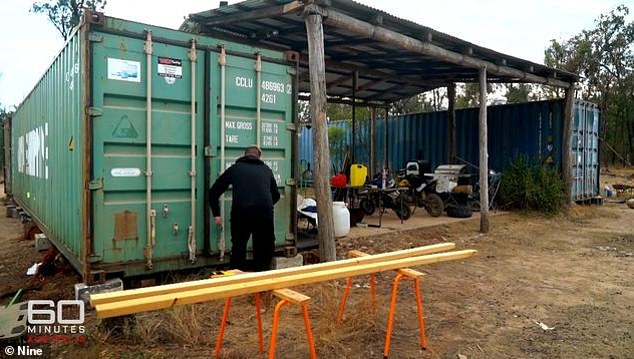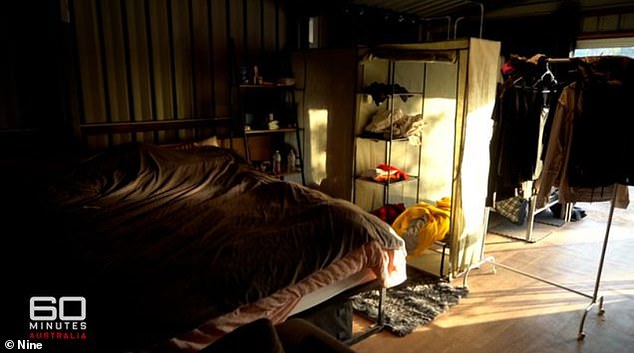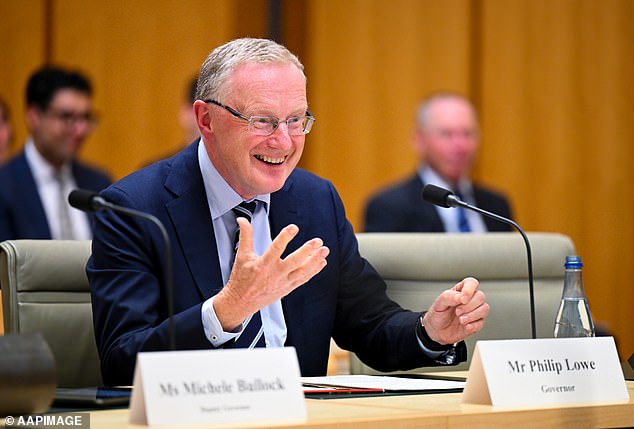Bundaberg family forced out of dream home by high mortgage repayments: Couple will live in shipping container to escape cost-of-living crisis
A family of four is converting shipping containers into a habitable home after aggressive rate hikes forced them to put their dream home up for sale.
Paul and Kayley Taylor lived with their daughters Lexi, 15, and Alicia, 10, in their dream home in Bundaberg, Queensland.
However, the family home became unaffordable following the Reserve Bank of Australia’s 12 interest rate hikes, sending cash rates to an 11-year high of 4.1 percent.
Mr Taylor, who works as a chef, believed that the family would not be in trouble financially due to the couple’s combined income.
But with the rising cost of living and higher mortgage payments, the two saw no other option than to put their house up for sale.
Queensland couple Paul and Kayley Taylor (left and right) sell their dream home after interest rate hikes make it unaffordable and plan to build a mortgage-free home out of shipping containers
The family desperately tries to sell the house as they plan to build a mortgage-free house out of shipping containers, but potential buyers prove elusive.
“I thought with the wages we were getting and the way we were living, we wouldn’t struggle,” Taylor told 60 Minutes.
“It (family house) is a noose around our neck… It just drags us down with how much it costs us to survive, to keep it going.”
The family was forced to separate and Mr. Taylor and Lexi moved 250 miles away to make the shipping container habitable on a vacant lot in Chinchilla.
The pair work together in the kitchen of the local RSL and spend all their free time transforming their new home.
The shipping container currently contains a bed and clothes hangar with gloomy furnishings, a world away from the comforts of their dream home.
Mrs Taylor and her daughter Alicia have been left in Bundaberg as they try to sell the house as quickly as possible so they can be reunited with their loved ones.
The family’s long-term plan is to save between $100,000 and $200,000 so they can convert the shipping containers into a comfortable home.

Mr and Mrs Taylor are working to make shipping containers on a remote site on the outskirts of Chinchilla livable for their family of four

The pair work together in the kitchen of the local RSL and spend all their free time transforming their new home
Mr Taylor said the family is not ‘running away’ but rather being smart about the financial situation they find themselves in.
“If we continue the way we are doing now, we will be in a hole. We want to get ourselves out before we get into that situation, and build our future,” Taylor said.
He added that inflation needs to be addressed, but argued that the Reserve Bank of Australia was not giving people enough time to evaluate their situation and save money.
“We were told they were going to do this in 2024. Do that and give people time to save,” Taylor said.
“Give people time to plan, and don’t just absolutely kill the economy that way. It has a big impact on all of us.’
The Reserve Bank of Australia suspended interest rates for the second month in a row on August 1 after inflation eased.
Outgoing Governor Philip Lowe even hinted that the increases may be over as his seven-year term ends on Sept. 17.
“The higher interest rates are and will continue to provide a more sustainable balance between supply and demand in the economy,” he said.
In light of this and the uncertainty surrounding the economic outlook, the board decided again this month to keep interest rates stable.
“This will provide more time to assess the impact of interest rate hikes to date and the economic outlook.”
While this was the third pause in 2023 so far, interest rates have risen 12 times since May 2022, from a record low of 0.1 percent, marking the most aggressive pace of monetary policy tightening since 1989.

Outgoing Governor Philip Lowe’s penultimate board meeting chose to pause cash interest at an 11-year high of 4.1 percent (Dr. Lowe is pictured at a Senate estimation in February)
A borrower with an average $600,000 mortgage has seen their annual repayments increase by $17,796 in just 15 months, with banks raising their variable interest rates even in months when the RBA didn’t move.
Monthly repayments are up 64 percent from $2,306 to $3,789.
But the rate hikes have pushed back inflation, which fell to 6 percent in June from 7 percent in the March quarter and a 32-year high of 7.8 percent at the end of 2022.
The Reserve Bank now expects headline inflation, also known as the consumer price index, to return to the top of its target of two to three percent by mid-2025, falling to 2.75 percent in December of that year.
